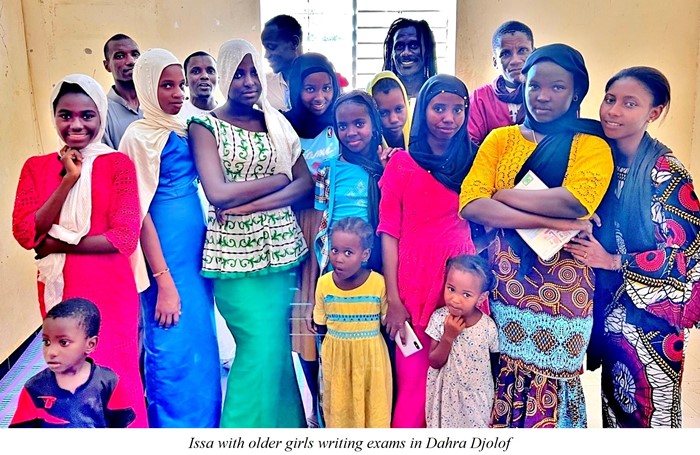News from Maison de la Gare
Miracle in the Desert
Tweeter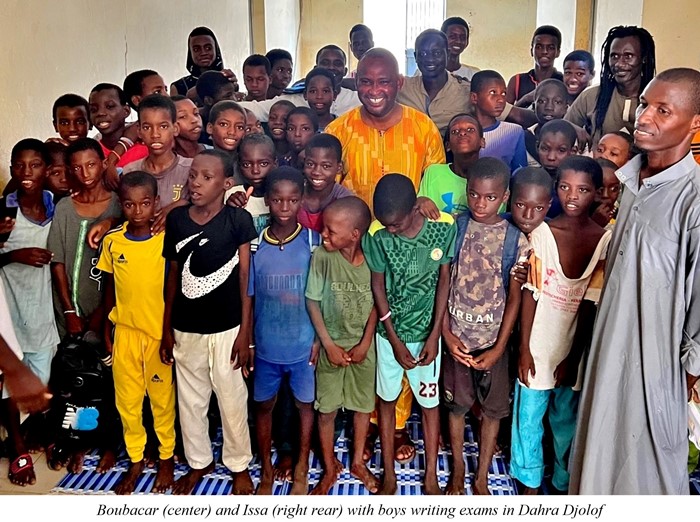
... seeing these children ready for exams feels like witnessing a miracle
(as told by Sonia LeRoy, Canadian partner of Maison de la Gare)
As we left the hotel behind us it was still dark. The crow of a rooster announced the new day
about to break. The car was waiting. Our guide, Cheikh Diallo, was just arriving from morning
prayers at the mosque. We stopped to pick up Issa and Boubacar on
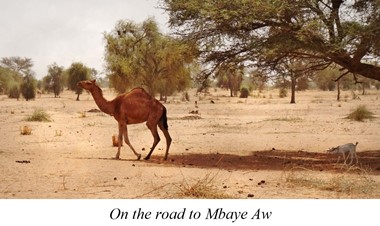 the other side of the Saint
Louis’s landmark Pont Faidherbe, and we were on our way.
the other side of the Saint
Louis’s landmark Pont Faidherbe, and we were on our way.
At Louga we left the highway and turned inland, toward Dahra Djolof. The sun had risen. The
sandy breeze flowed through the open windows of the van, and most of the heat of the day
was still in reserve.
After about three hours we stopped in Dahra Djolof to pick up our bush guide, Omar. He would
ensure we not lose our way in the desert bush. The first hour of the road was so potholed we
mostly drove on the sand. Then we turned off even that road. We eventually arrived at the
region of Mbaye Aw. Our first stop was the Médina Alpha school. This was the first of the schools
that Cheikh has organized in the region, with Maison de la Gare’s support. The only
one so far to be built of cement.
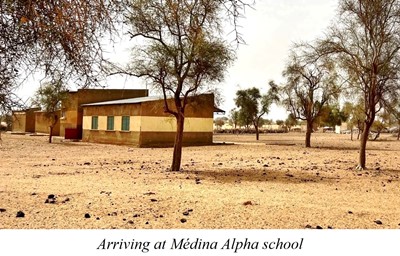
As we left the vehicle, villagers began to make their way curiously toward us from distant huts.
Parents, some past students, and some current students were in the group. Class was not in
session, as the teachers and many of the students are currently in Dahra Djolof writing government
exams. We asked if the past and present students would allow us to photograph them in front of
the school. A parent phoned the village elder who came to observe the situation. After a
discussion with Cheikh, he granted his permission.
After the pictures were taken, more villagers who had initially been reluctant to be photographed
insisted we re-take the photo, as all who were present now wanted to be included.
Fifty-seven students attend this school, boys and girls. The students who had advanced as far as
they could (about five or six years of education, before travelling far
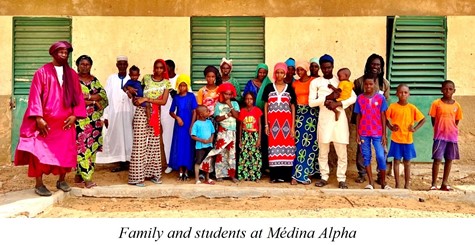 afield would be required
to continue) spoke good French.
afield would be required
to continue) spoke good French.
Four of the other five schools are built of straw and are reinforced or rebuilt by the villagers
after each rainy season. One is not yet built; the teacher and students gather under a tree to
teach and learn. Interestingly, after a few years of classes at the cement school in Médina
Alpha, the government accredited the schools and sent a government teacher. Proving that there
is no need to wait and hope that authorities will build schools where schools have never been
and are not likely to be … if we build it, they will come!
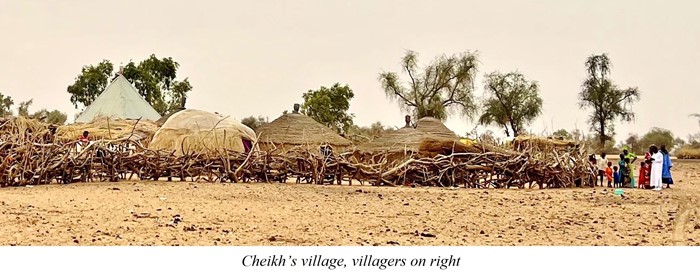
After a wonderful meal, tea, and a peaceful visit in Cheikh’s idyllic, traditional village, we
got back in the car for the several hours drive, directed by Omar, through the desert to Dahra
Djolof to meet the sixty-five students, their guardians and teachers.
A large house had been rented for the purpose of housing these students. A teacher, several
parents, a supervisor, and a few cooks from the villages all stayed together to watch over and
tend the children as they prepared for and wrote their exams over several weeks.
When we arrived, we were invited to enjoy our second meal that day. This time, thieboudienne,
the Senegalese national dish. Then we were introduced to the children who were divided into
three groups to meet us, the boys, the young girls and the older girls. Several people made
speeches about the importance of education, the success of this school program in remote villages,
and hope for the future.
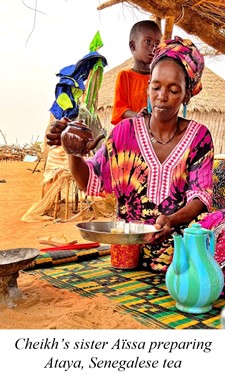
I was introduced as a partner who helped make this possible. I was invited to speak, and I seized
the opportunity to deflect praise toward the truly deserving recipients: the Senegalese who
conceived of and founded Maison de la Gare (Issa Kouyaté), the Senegalese founder of the Mbaye Aw
schools project (Cheikh Diallo), and all the staff and leaders of Maison de la Gare who never
cease their efforts on behalf of the begging talibé children of Senegal.
Then we got to meet the kids and take pictures with them. It is incredible to realize that these
bright, articulate, eager students had never had the opportunity to attend school until the five
schools were built. Twelve of the boys writing exams are returned talibés who used to be forced
daily to beg on the streets for quotas of money. But, several years ago, these boys had returned
because now there was a school to attend. Few families now send their sons from these villages
to becomes talibés. A marabout has even returned to teach the Quran traditionally, village-based,
while the children live at home, cared-for by their families.
Meeting the girls was just as inspiring. They work the hardest and are the most dedicated to
their studies. Never having had the opportunity for an education of any kind, they seem thirsty
for more. They recognize the opportunity education offers. Before the schools, their expected
path was a child marriage; we invite you to
read our earlier report, “A Travesty against Humanity,” to get a sense of
what a miracle it is that these girls are now in Dahra Djolof writing exams. The words and fears
and hopes that these girls shared will always remain with me.
The Mbaye Aw school project is a success. Accessible, village-based schools are so clearly a tool
for not only education, but also for ending the modern slavery of the forced-begging talibé boys
and of the forced early polygamous marriage of young girls.
________
Afterword – Cheikh has just reported that 31 of the 34 boys taking government exams were
successful, including 11 of the 12 returned talibés. 30 of the 31 girls were successful.
